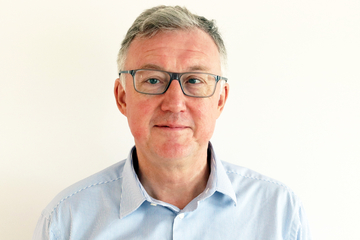Program
The conference program run parallel with the Expo. Feel free to visit any of the sessions when you register for Evertiq Expo. If you wish to participate, please contact- 09:00 - 09:30Compliance simplified and according to customer drawings in terms of materials and stack up requirements.Alexandre Buia - Sales Manager France - Confidee AS
PCBs are the backbone of electronic devices, serving as the foundation for more or less every electronic product you interact with on a daily basis. Therefore, the selection of materials for PCBs is a critical aspect of the design process, directly impacting the performance, reliability, and longevity of the end product. But over-specifying can make it hard to find a compliant PCB partner, how to manoeuvre in the jungle of compliance?

- 09:35 - 10:05How to increase PCB depaneling efficiency with Laser TechnologyJavier Gonzalez - Sales Manager - InnoLas Solutions GmbH
Laser depaneling is becoming more widely used since the demand for excellent cutting quality and increasing cost pressure require one to reevaluate the use of traditional production methods. For example, laser depaneling provides the highest technical cleanliness that improves the durability of electronics, increase yield and reduces manufacturing costs. Furthermore, laser technology provides a new path to increase panel efficiency and therefore reduce material waste and costs.
- 10:10 - 10:40SPECIAL GUEST - SiPearl and the European Processor InitiativeThierry Lelégard - Head of platform security - SiPearl & European Processor Initiative
As Europe consumes nearly 30% of the world’s supercomputing resources, only 5% of supercomputers are supplied in Europe and exactly 0% of the microprocessors powering them are designed here. The European Processor Initiative (EPI) is the EU response to this strategic autonomy challenge. SiPearl is the private company which was created within the EPI. Located in France, Germany, and Spain, SiPearl designs the next energy-efficient microprocessor for HPC. And the subsequent generations of SiPearl microprocessors will power Europe’s data centers and cloud infrastructures.

- 10:45 - 11:15How To Protect Margins in The Wake of Market Risks and Evolutions?Loïc Biarez - General Director - Supplyframe
In today’s electronics manufacturing landscape, where every new design decision introduces new complexities into the organization’s supply chain, those that don’t consider long-term risk or cost will find themselves falling behind.
- 11:20 - 11:50Navigating the Future - Digital Supply Chains in the Electronics IndustrySylvain Chillet - Sales Executive France - Luminovo GmbH
Embark on a journey into the heart of modern supply chain dynamics! Join us, as we trace the evolution of supply chains from traditional methods to the integration of APIs, unraveling the profound differences along the way. Explore the foundational role of digitalization and automation in revolutionizing procurement processes, offering unparalleled efficiency for EMS and OEMs. Delve into the potential game-changing impact of artificial intelligence on refining and enhancing every facet of supply chain operations. Stay at the forefront of technological advancements in the realm of smarter, faster, and more efficient supply chains!
- 11:55 - 12:25From Crystal Ball to Glass Pipeline – Market Outlook and Supply Chain ChallengesMichael Muehlenhoff - Director of Enterprise Sales - Sourceability
After the shortage comes the consolidation: The electronic component market has seen some dynamic growth over the last two years and a beginning of a consolidation in the computer & communication market. Automotive and Industrial are later in the cycle, and Europe has benefitted quite a lot. The near-term outlook – macroeconomically and within the industry is rather modest, and all of this amidst growing geopolitical tension: How will that influence the overall market development, how will new technologies disrupt the industry what does this mean for a thorough supply chain planning? The future supply chain will get more complicated and will need more digital tools to create a quasi-global transparency on both product information, availability alerts and transactional processes. This presentation tries to show some ways of improving supply chain transparency by a cooperative approach across company boundaries. Georg Steinberger is a 35-year industry and distribution veteran and current works as a freelance industry consultant, writer and speaker for Sourceability. He is also Chairman of the German Components Distribution Association (FBDi) and President of the International Electronics Distribution Association (IDEA).
- 12:35 - 13:05VIAS & MICROVIAS - DESIGN TIPPS FOR HIGH-DENSITYVjeko Grishaber - CEO - ALBA PCB Group/Q-print electronic GmbH
Miniaturization and increasing complexity do not stop at printed circuit boards. Especially with regard to the definition and design of possible via types, in particular for highlayer and/or highdensity PCBs, questions from designers, developers and purchasers regularly arise, which will be summarized in this presentation.
- 13:10 - 13:40SPECIAL GUEST - SiC and its impact on EuropeJean-Christophe Eloy - CEO - Yole Group Statistics
Power SiC devices are now adopted by multiple electric vehicle carmakers. It started with Tesla, then BYD, and now most of the high-end car manufacturers have announced models using SiC-based inverters. The market growth is impressive, as well as the related investment in crystal growth, wafering, epitaxy, device manufacturing, and power module assembly. ST Microelectronics is the leader at the device level, followed by Infineon Technologies. But what is the clear competitive landscape for Europe across the SiC supply chain? What could be the impact of the high investments in China and the USA? What can we expect in the next 5 years with the push from Soitec, as well as the new technologies developed by multiple other companies?

- 13:45 - 14:15SPECIAL GUEST - Transitioning to a Circular Economy for Greener Electronic Systems with Virtuals TwinsManuel REI - Semiconductor Industry Solution Experience Director - Dassault Systèmes
Greener electronics sustainability will come from the practice of designing, producing, using, and disposing of electronic devices in a sustainable and environmentally responsible way.Virtual twins help companies adopting strategies such as designing for longevity and reparability, using recycled materials, adopting a circular business model, embracing digitalization, and educating consumers, we can create a more sustainable and resilient future.
- 14:20 - 14:50Avoiding the Obsolescence IcebergRoland Urband - Director, Sales - Southern Europe - Rochester Electronics
After the difficult and lengthy period of allocation – now comes the market “adjustment” as Semiconductor manufacturers cut unprofitable lines and re-set their technology roadmaps. Product Discontinuations are arriving at an unprecedented rate and crucially many are un-forecasted. What pro-active steps should Customers take to minimise the impact of obsolescence and de-risk their key products?
- 14:55 - 15:25Improving yield, performance and quality with innovative Laser TechnologyAbdulla Raufi - Sales Manager - LPKF
Due to a significantly improved price-performance ratio and outstanding technological advantages laser systems are being used for more and more applications especially for depaneling. Gentle processing and a technically clean process enable stress as well as residues and therefore reject rates to be significantly reduced. Increasing requirements of the applications in terms of quality, accuracy and reliability can currently and prospectively be met without restrictions.
- 15:30 - 16:00Innovation + sustainable development: The new business model to address the society challengesJames NicolaÏ - General Manager - Fantastic Sourcing
All stakeholders evolving today in the indstrustial electronic sectors, whether you are an Original equipment manufacturer, an Electronic manufacturing services, a Government institute, a Public organisation or a SME, is to include in its business model or vision, both strategic orientations: Innovation and sustainability.
The society challenges arising from 5 key changes that are Demographic evolution - Urbanization - Globalization - Digitalization - Environmental change & resource efficiency, will have a profound impact on both our individual and our collective future. As a private or public organisation, we all have the responsibility to participate in the transition of our Society: how to drive the necessary change ?
By embracing innovation while driving the change in a sustainable manner (creating devices that address these challenges, investing in startups with positive impact, rethinking our supply chain activities using AI, integrated platforms, grouped logistics, digital nomadism, action to reduce carbon footprint etc..)...